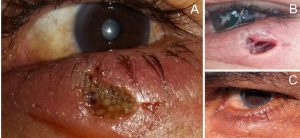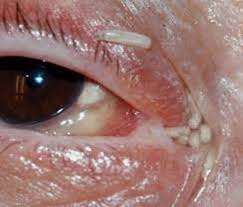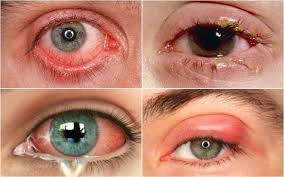It might sound like something from a suspense film, but there’s a rare medical condition known as Myiasis that occurs more often than people realize in specific climates. Rather than behaving like typical insects, certain species are known to lay eggs on exposed surfaces—like skin or clothing—which can lead to health concerns if not addressed promptly.
But how does this actually happen? Why does it affect some people and not others? And most importantly—how can you protect yourself? Let’s take a closer look.
What Is Myiasis—and How Does It Affect Humans?
Myiasis refers to a condition in which specific types of insect larvae (such as Dermatobia hominis or Chrysomya bezziana) come into contact with human or animal tissue and develop there. Unlike common flies that hover around food waste, these species may target open areas, worn fabrics, or even recently used bedding, especially in certain parts of the world.
Once in contact, these organisms can begin to grow, potentially causing mild to moderate irritation, swelling, or noticeable changes in the skin. Without proper care, the condition may worsen and lead to complications.
How Do People Become Affected?
This condition isn’t limited to remote areas. It can happen to anyone, especially under the following circumstances:
- Eating food that has been left exposed for too long
- Having an uncovered wound in areas with high insect activity
- Traveling to tropical or subtropical regions without using protective measures
- Wearing clothes or sleeping on linens that were left outdoors
In summary, anyone spending time in insect-heavy environments should take simple precautions to lower the risk—such as covering wounds, keeping food sealed, and ensuring clothing or bedding is stored properly.

Recognizing Early Signs of a Rare Skin-Related Condition
While it may be unsettling to think about, identifying symptoms early is important for timely treatment. Depending on where the issue develops, you might notice:
- Ongoing skin irritation or sores that don’t heal easily
- An unusual sensation beneath the skin, like light movement or tingling
- Localized discomfort, mild swelling, or visible skin changes
- Unexpected fluid or discharge from an affected area
- If near the ear: mild buzzing, sensitivity, or muffled hearing
- If near the eye: redness, irritation, or slight vision changes
- In rare cases affecting digestion: nausea or stomach upset
- In intimate areas: discomfort or irregular discharge
- If left untreated, more serious complications can arise. That’s why it’s essential to consult a healthcare professional at the first signs.
How Do Doctors Diagnose the Condition?
In some instances, the condition can be diagnosed through a simple physical examination. If the signs aren’t clearly visible, doctors might recommend:
- Blood tests to check for inflammation or infection
- Imaging tools (like ultrasound or MRI) to examine deeper tissue
- Lab testing to analyze small samples for accurate identification
- A tiny skin opening may also help healthcare providers confirm what’s happening beneath the surface, making early diagnosis easier.

Treatment: How Is This Skin Condition Managed Safely?
Treatment focuses on carefully removing the source of the problem and supporting proper healing. Medical professionals typically use the following methods:
- Applying specialized ointments to limit oxygen access and encourage natural detachment
- Gently removing the affected material using sterile instruments
- Thoroughly cleaning the area and applying appropriate skin care
- Prescribing antibiotics if there are signs of infection
- In certain cases, oral or topical medications (such as ivermectin) may be recommended
- For more complex or internal cases, minor surgical procedures might be needed
Important: Always consult a healthcare provider. Attempting to treat the issue yourself may increase the risk of further complications or incomplete treatment.
Prevention Tips – Because No One Wants This Experience
The good news is that this condition is highly preventable with the right precautions:
- Practice regular personal hygiene
- Keep any cuts or scrapes clean and properly covered
- Store food safely and avoid items left out in open air
- Use insect repellent and sleep under netting in regions with high insect activity
- Avoid wearing clothing or using bedding that has been left outside overnight
- When traveling to warmer climates, take extra protective steps
Being proactive and informed can significantly reduce your risk and keep you safe—no need for worry when you’re prepared.


